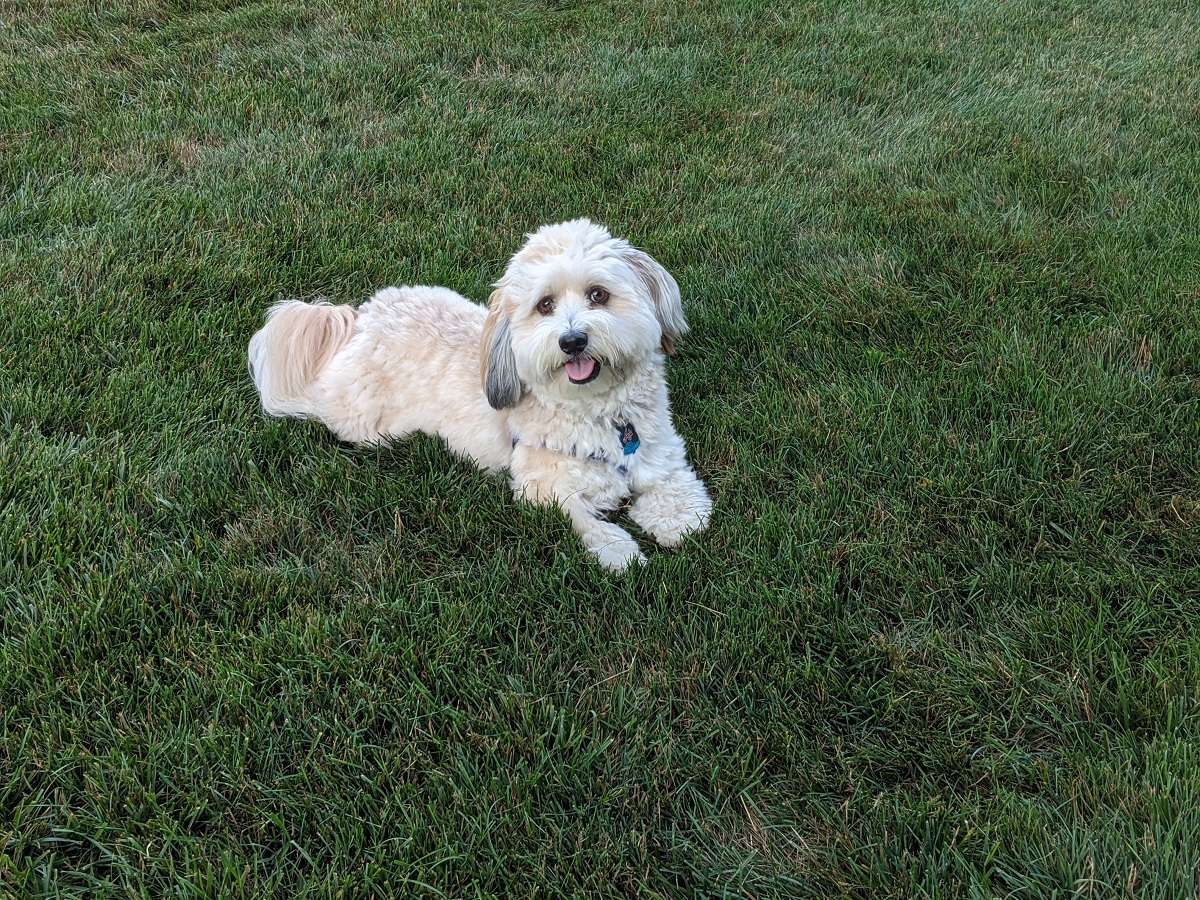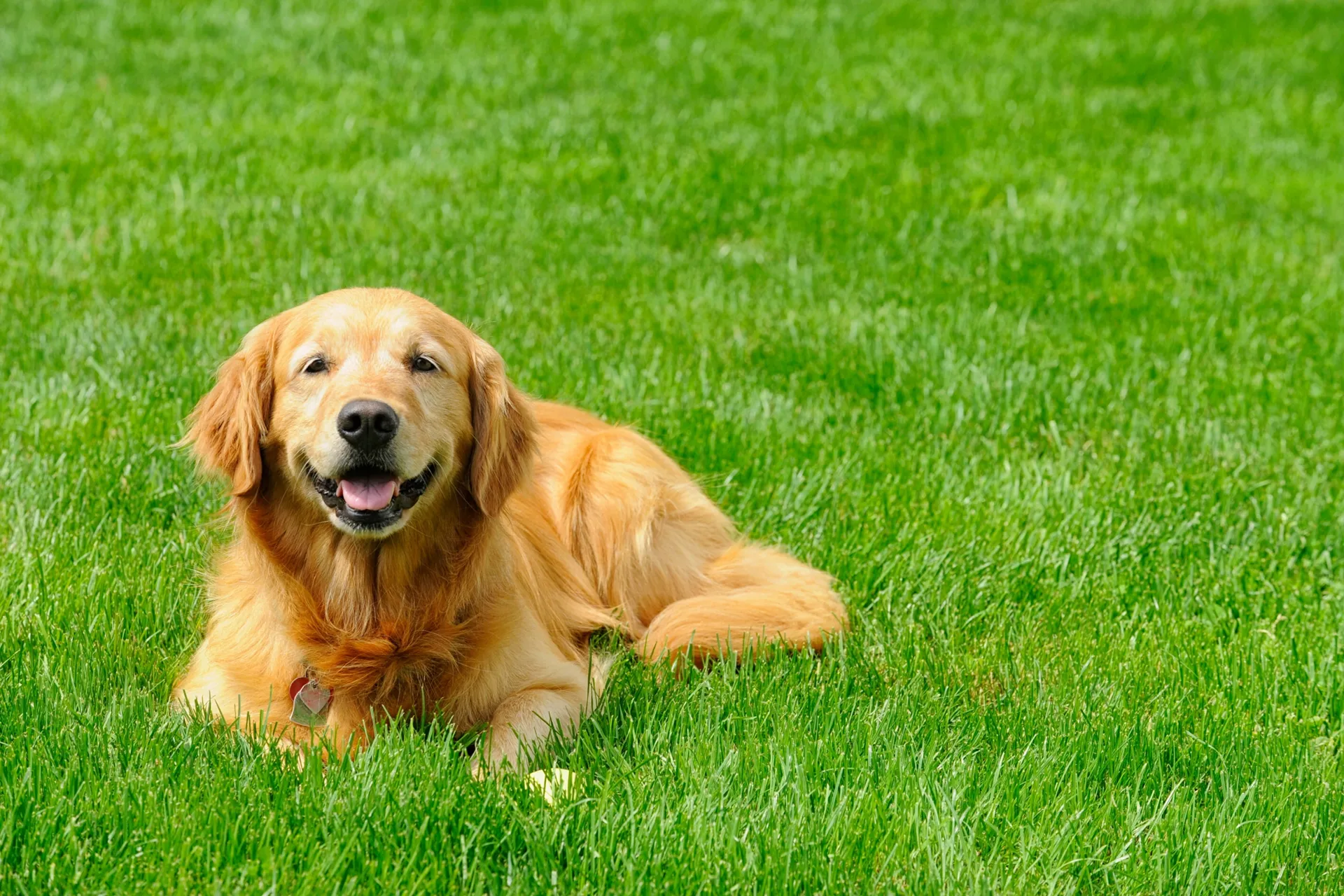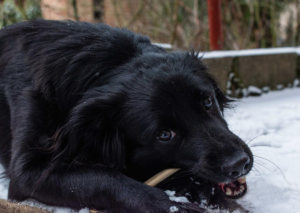After lawn treatment, it is generally safe for dogs to return once the area is dry. This usually takes about 24 to 72 hours, depending on the type of treatment used. So let’s jump in deep: How Long After Lawn Treatment is It Safe for Dogs?
Keeping your lawn healthy is important. Many homeowners use chemicals for fertilization or pest control. These treatments can help grass grow lush and vibrant. However, pet owners often worry about their furry friends. What happens if a dog walks on treated grass?
How long should you wait before letting them outside? Understanding the safety of lawn treatments can protect your pets. It is crucial to know how different products work. This knowledge helps you make informed choices for your lawn and your dog’s health. Let’s explore the best practices for lawn treatments and pet safety.
Table of Contents
Introduction To Lawn Care And Pet Safety
Many pet owners love a beautiful lawn. However, keeping a lawn healthy can be tricky. Lawn treatments can help, but they also raise safety concerns for pets. Understanding how to care for your lawn safely is key.
The Importance Of A Pet-friendly Environment
Creating a safe space for pets is essential. A pet-friendly lawn benefits both pets and owners. Here are some reasons why:
- Health: Pets can suffer from toxic chemicals.
- Comfort: Safe lawns allow pets to play freely.
- Bonding: Time spent outdoors strengthens the pet-owner bond.
Choosing safe lawn treatments is crucial. It helps keep pets healthy and happy.
Common Lawn Treatments And Potential Risks
Many treatments can keep your lawn green. However, some can harm pets. Here are common treatments and their risks:
| Treatment | Potential Risks to Pets |
|---|---|
| Fertilizers | Can cause stomach upset or poisoning. |
| Herbicides | May lead to skin irritation or nausea. |
| Pesticides | Can be toxic if ingested. |
Always read labels before applying treatments. Some products have specific waiting periods. This helps ensure your pets are safe.
Consider using organic options. They are often safer for pets. A little care goes a long way in protecting your furry friends.
Types Of Lawn Treatments
Choosing the right lawn treatment is important. Different types affect your lawn and pets differently. Here are the main types of lawn treatments.
Chemical Fertilizers
Chemical fertilizers help grass grow quickly. They contain nutrients like nitrogen, phosphorus, and potassium. These can be harmful to dogs.
After application, keep your dog off the lawn for at least:
- 24 to 48 hours for most chemical fertilizers.
- Longer if rain occurs shortly after treatment.
Check the label. Some fertilizers have specific waiting times.
Herbicides And Pesticides
Herbicides control unwanted weeds. Pesticides target pests like insects and grubs. Both can be toxic to pets.
It is best to keep dogs away for:
- 24 to 72 hours after herbicide application.
- At least 48 hours after pesticide use.
Follow the instructions on the product. Safety is key for your furry friends.
Organic And Natural Alternatives
Organic and natural treatments are safer for pets. They use natural ingredients like compost, fish emulsion, or vinegar.
These options usually require shorter waiting times:
- 1 to 3 hours for organic fertilizers.
- Less than 24 hours for natural weed killers.
Always verify the safety of any product before use.
Understanding Chemical Exposure
When you treat your lawn, chemicals are often used. These chemicals can affect pets, especially dogs. Understanding how dogs can be exposed to these chemicals is important. Knowing the signs of toxicity helps keep your pets safe.
Routes Of Exposure For Dogs
Dogs can be exposed to lawn chemicals in several ways:
- Ingestion: Dogs may eat grass or soil that has chemicals.
- Inhalation: Dogs can breathe in chemical sprays or dust.
- Skin contact: Chemicals can absorb through the skin.
Always monitor where your dog plays after treatment. Keeping them away from treated areas helps prevent exposure.
Signs Of Toxicity In Pets
Recognizing signs of toxicity is crucial. Look for these symptoms:
| Symptom | Description |
|---|---|
| Vomiting | Dog may throw up after exposure. |
| Diarrhea | Loose or watery stools may occur. |
| Lethargy | Dog may seem unusually tired or weak. |
| Tremors | Shaking or muscle twitching can happen. |
| Difficulty breathing | Labored or rapid breathing may occur. |
Contact a veterinarian if you notice any of these signs. Early treatment can make a difference.
Safety Guidelines For Chemical Treatments
Keeping your dog safe after lawn treatments is very important. Chemical treatments can harm pets if they are not careful. Follow these safety guidelines to ensure your furry friend stays protected.
Manufacturer’s Instructions And Waiting Periods
Every lawn treatment product comes with specific instructions. Always read the label before applying. Here are some common waiting periods:
| Treatment Type | Waiting Period |
|---|---|
| Fertilizers | 24 to 48 hours |
| Weed Killers | 48 to 72 hours |
| Pesticides | 24 to 72 hours |
These times may vary. Always follow the manufacturer’s instructions. This helps keep your dog safe. Check for any specific warnings on the product label.
Additional Precautions To Consider
In addition to following instructions, consider these extra precautions:
- Keep pets off treated areas until it’s safe.
- Wash your hands after handling chemicals.
- Store chemicals in a secure place.
- Monitor your dog for unusual behavior after treatment.
Watch for signs of illness. Symptoms may include vomiting or lethargy. If you notice these signs, contact your vet.
Organic Treatments And Dog Safety
Organic lawn treatments are a popular choice for pet owners. They promise a greener yard without harmful chemicals. But how safe are these products for your dogs? Understanding organic treatments helps ensure your furry friends stay safe.
Benefits Of Going Organic
Choosing organic lawn treatments has many benefits:
- Safer for pets: No harsh chemicals mean less risk.
- Healthier environment: Organic products reduce pollution.
- Better soil quality: Organic treatments improve soil health.
- Promotes biodiversity: Supports local plants and wildlife.
Ensuring Organic Treatments Are Pet-safe
Not all organic treatments are the same. Some may still pose risks. Follow these tips to ensure safety:
- Check labels for ingredients. Look for pet-safe certifications.
- Consult with your vet. They can recommend safe options.
- Keep pets away during application. Allow time for drying.
- Observe your dog after treatment. Watch for any reactions.
Using organic treatments can keep your lawn healthy. It also protects your pets from harmful substances. Make informed choices for a safe, green yard.

Credit: www.lawnbuddies.com
Post-treatment Best Practices
After treating your lawn, it’s important to follow certain best practices. This helps keep your pets safe and ensures effective treatment. Below are key points to consider.
Post-application Lawn Care
Taking care of your lawn after treatment is crucial. Follow these steps:
- Watering: Water the lawn as directed. This helps wash away chemicals.
- Mowing: Wait at least 48 hours before mowing. This allows the treatment to absorb.
- Fertilizing: Avoid fertilizing for at least two weeks after treatment.
- Inspection: Check for any signs of damage or changes in grass color.
Creating A Pet-safe Zone During Treatment
Keeping pets away from treated areas is essential. Here are some tips:
- Designate a safe area: Create a space where pets can play safely.
- Use barriers: Set up fences or gates to keep pets away.
- Inform family and friends: Let them know not to let pets on the lawn.
- Monitor pets: Keep an eye on them until the area is safe.
| Activity | Recommended Timing |
|---|---|
| Watering | Immediately after treatment |
| Mowing | 48 hours post-treatment |
| Fertilizing | 2 weeks after treatment |
| Pet Monitoring | Until area is safe |
Following these best practices ensures your lawn treatment works well. It also keeps your furry friends safe. Always prioritize your pet’s health and safety.
Recognizing And Managing Exposure
Knowing how to recognize and manage exposure to lawn treatments is vital for dog owners. Dogs are curious. They explore their environment with their noses and mouths. This can lead to accidental contact with chemicals. Understanding the signs of exposure can help keep your pet safe.
First Aid For Accidental Ingestion
If your dog ingests lawn treatment, act quickly. Follow these steps:
- Stay calm. Panicking helps no one.
- Check the product label. Look for ingredients and safety instructions.
- Do not induce vomiting unless instructed by a vet.
- Provide water. This helps dilute the substance.
- Monitor your dog for symptoms like vomiting, diarrhea, or lethargy.
- Keep the packaging for reference when contacting a vet.
When To Seek Veterinary Care
Some signs require immediate veterinary attention. Watch for the following:
- Severe vomiting or diarrhea
- Lethargy or weakness
- Tremors or seizures
- Excessive drooling or difficulty breathing
If you notice any of these symptoms, contact your vet right away. Time is crucial for your pet’s health.
| Symptom | Action |
|---|---|
| Severe vomiting | Contact your vet immediately |
| Lethargy | Monitor closely, seek advice |
| Tremors | Emergency vet visit required |
.webp)
Credit: www.okvets.com

Credit: www.groundsguys.com
Frequently Asked Questions
How Soon Can Dogs Go On Treated Lawns?
It is generally safe for dogs to return to treated lawns after 24 to 48 hours. This timeframe allows chemicals to dry and settle. Always check the specific product instructions for guidance, as some treatments may require longer waiting periods.
Is Lawn Treatment Harmful To Pets?
Many lawn treatments can be harmful to pets if ingested or if they come into contact with treated areas. Chemicals in fertilizers and pesticides can cause various health issues. Always follow safety guidelines and consider using pet-friendly alternatives.
What Signs Indicate Lawn Treatment Exposure In Dogs?
Signs of exposure to lawn treatments in dogs include vomiting, diarrhea, excessive drooling, and lethargy. Skin irritations or unusual behavior may also occur. If you suspect exposure, consult your veterinarian immediately for proper care and treatment.
Can I Treat My Lawn If I Have A Dog?
Yes, you can treat your lawn if you have a dog, but caution is necessary. Opt for pet-safe products and keep your dog indoors during treatment. Always follow the application instructions and allow sufficient time for the chemicals to dry before letting your pet outside.
Conclusion
Keeping your dog safe after lawn treatment is important. Wait at least 24 to 48 hours before letting them play outside. This allows chemicals to settle and dry. Always check product instructions for specific wait times. Consider using natural treatments for added safety.
Monitoring your pet’s behavior is crucial. If they show signs of distress, contact a vet. A little patience goes a long way. Your dog will thank you for keeping them safe. Enjoy your beautiful lawn and happy, healthy pets.



